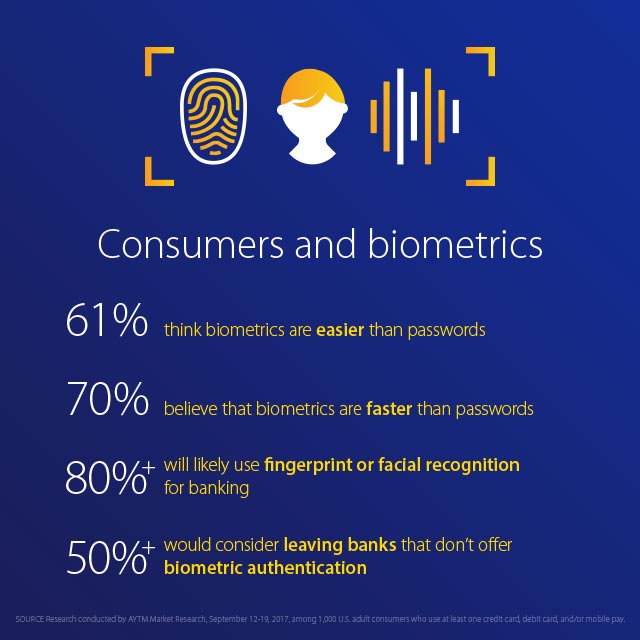What if you never needed to type in another password or PIN?
That’s the potential of biometrics: the application of technology and data to analyze the physical and behavioral traits unique to an individual, including their fingerprints, voice, facial or iris structure, and even how they type. Biometrics can help us make authenticating consumers safer and more secure, and do it all in the time it takes to snap a selfie. Yes, a selfie - how cool?!
Intelligent biometrics offer simplicity and security
Biometrics are the next logical step in the evolution of authentication for two reasons: convenience and security. Snapping a photo or pressing your finger to your smartphone to unlock it is significantly simpler than fumbling with a complex, case-sensitive password on your phone’s keyboard. And since biometric data is unique to each person, it’s substantially harder for criminals to commit fraud—especially at scale.
Biometrics are here and now
A study forecasted that in 2017 there would be nearly 2 billion biometrics payments – up from 600 million in 2016.1
Logging in with a fingerprint is already mainstream. Taking a selfie is no longer just for showing off your new outfit—now you can authenticate payment for your clothes with a selfie. And voice recognition as an enabler of commerce is an innovation happening right before our eyes (and ears).

Source: Biometrics Payments quantitative survey 2016, conducted by Populus, “Commissioned by Visa” (for proprietary Visa research). The research was conducted between 22 April and 6 May 2016 in 7 European countries: UK, Sweden, Spain, France, Germany, Italy and Poland. The total sample size was 14,236 with around 2,000 respondents per country.
_____________________
1Juniper Research, “Mobile Payment Security: Biometric Authentication & Tokenisation 2017-2021”
Real-world challenges in front of us
It’s exciting to imagine a world where biometrics reduce the need for passwords and PINs, but we’re not quite there yet. That’s because biometrics can’t work just 80 percent of the time, or even 90 percent of the time.
Biometrics have to work close to 100 percent of the time.
Some of the obstacles to reaching this goal are obvious. If you’ve ever tried to unlock your smartphone with a wet thumb, take a selfie in the dark, or talk to a voice-activated speaker in a noisy room, then you’re already aware of a few real-world challenges.
And while biometrics are difficult to use fraudulently, that doesn’t mean that misuse is impossible.
The biometrics industry is investing in a variety of techniques to make it harder for the fraudsters to spoof a fingerprint, photo or voice and use it to commit fraud. For example, cameras are now capable of registering micromovements or blinking to distinguish between a real cardholder and a photo of the cardholder. “Liveness” checks are available or coming to many biometrics systems.
To foil cybercriminals, we need to work smarter
But it’s not just about the biometrics. If we really want to make our data safer, we also need to be more intelligent about the device that is registering the biometrics. This means detecting the identity, reputation and location of the device being used to initiate the transaction.
To dive deeper on what this means for commerce and how Visa is approaching biometrics, visit the Visa Security blog post.
Thoughts? Share in the comments below!


